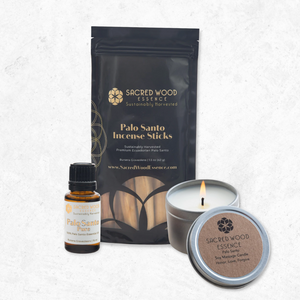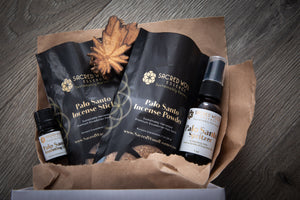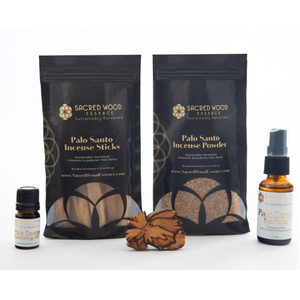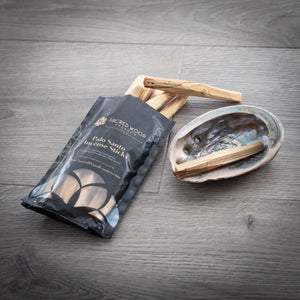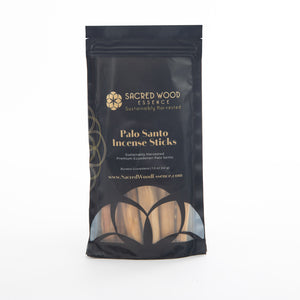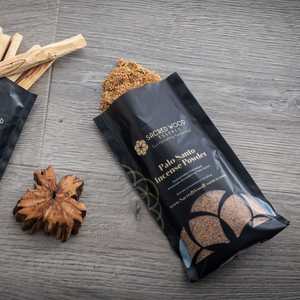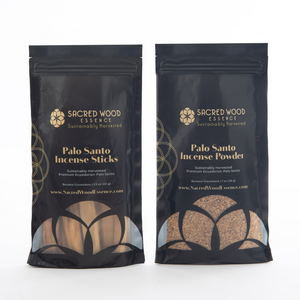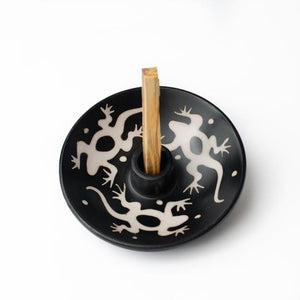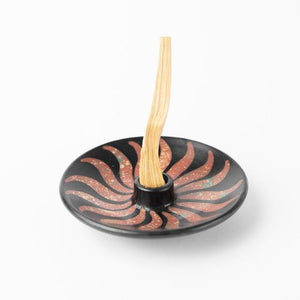Here’s an interesting fact for those of you who love our Sacred Wood Essence Palo Santo incense sticks and essential oils: The aromatic tree commonly known as Palo Santo in the US (Bursera graveolens) has a natural range that extends from the Yucatan Peninsula in Mexico all the way to Peru in South America. That’s an area greater than the ranges of North America’s Coast Redwoods and Giant Sequoias combined!
Recently, there has been a lot of press in North America and beyond about how Palo Santo is endangered. Many of our customers have been told that supporting companies such as Sacred Wood Essence that import Palo Santo from South America may encourage deforestation in its source region.
While we at Sacred Wood Essence acknowledge and honor the good intentions of the people spreading this information—indeed, we share their desire for a more harmonious relationship with our Mother Earth—we would like to clear up some confusion on this issue and map out a way forward for sustainable production of this beneficial, delightful wood.
Much of the confusion about Palo Santo may arise from the fact that there are actually two South American trees called Palo Santo, and they are both frequently enjoyed for their fragrances.
Although these trees share the name Palo Santo (the name translates from Spanish as “Sacred Wood,” an allusion to the incense commonly burned at Catholic mass), they are two totally different species that grow in different parts of this vast Spanish-speaking region.
One of these species, a mahogany-like tree known to botanists as Bulnesia sarmientoi, actually is threatened with over-exploitation … but not the one we sell (Bursera graveolens).
Here’s an easy way to tell the two types of Palo Santo apart: Palo Santo from the threatened Bulnesia sarmientoi tree is dark and reddish, akin to mahogany. Palo Santo from sustainably harvested Bursera graveolens, such as what we at Sacred Wood Essence provide, is yellowish-tan, similar to pine, and sometimes streaked with darker shades of gray or brown.
Bulnesia sarmientoi, the threatened type of Palo Santo, grows in the Gran Chaco region of northern Argentina and southern Paraguay. This tree species is highly valued for the long, straight, durable lumber it produces, as well as for the fragrant resin its wood contains, which is frequently used in the manufacture of soap and incense sticks.
The surrounding forests where Bulnesia sarmientoi grows are heavily logged for firewood to fuel the smoke-drying industry of yerba mate tea and to clear space for cattle grazing1.
While the logging of Bulnesia sarmientoi in the Gran Chaco is a serious ecological problem, as is the deforestation that is happening across South America and the world beyond, the production of Sacred Wood Essence Palo Santo sticks and essential oil from Bursera graveolens is actually contributing to reforestation and sustainable livelihoods in the arid hill-country of coastal Ecuador2.
In a sad twist, the misguided call to boycott Bursera graveolens removes opportunities for sustainable livelihood in Ecuador, which actually then encourages forest clearing for cattle grazing and other land-degrading industries, while it does nothing to address the overconsumption of Bulnesia sarmientoi in Argentina and Paraguay.
Indeed, the forests where the type of Palo Santo (Bursera graveolens) that we provide grows are under a great deal of economic pressure as well. Anyone who spends time on the ground in the arid subtropical coast ranges of southern Ecuador will quickly encounter an ecosystem under duress.

This forest type, known to ecologists as the Ecuadorian Dry Forest, has been severely damaged by centuries of deforestation, overgrazing, and erosion due to unsustainable farming practices4.
Sadly, only 1% of this original forest type remains today. What little is left outside of a few scattered reserves is mostly fragmented secondary growth. This land is home to many endemic species of plants and animals at risk of extinction.
One example of a severely threatened animal that relies on the Ecuadorian Dry Forest is a bird known as Esmerelda’s woodstar (Chaetocercus berlepschi), a vivid green hummingbird that makes its living pollinating wildflowers in the shade of Palo Santo trees3.
So, with so much confusing information out there, and so many critical problems in need of our attention and positive intentions, is use of the Bursera graveolens-type of Palo Santo good for the forest or not?
As a company whose business model is built around selling this aromatic wood, we at Sacred Wood Essence hope to earn your trust by providing you with facts.

Fact: In the ten-plus years since we founded Sacred Wood Essence, we and our partners in the Manabi region of Ecuador have never cut down a single Palo Santo tree.
We only gather wood from fallen trees that have aged at least four years, allowing the resins to naturally develop. More scientific research needs to be done to understand why, but when it comes to Palo Santo, a cut tree is a bland tree. In order to produce the resin we enjoy for its delightful healing aroma, Palo Santo requires a natural death and a prolonged aging period.
As such, the cultivation and harvest of Palo Santo is actually ideally suited to a sustainable business model that emphasizes an intimate working relationship with the land.
Fact: In the ten-plus years since we founded Sacred Wood Essence, we have employed many families who have received a direct economic incentive to preserve the forests that provide them with livelihood. Our work has empowered local people to improve their daily lives in meaningful ways in long-term cooperation with the land that nourishes and sustains them.

Fact: In eighteen-plus years our source has planted over one hundred thousand Palo Santo trees in the Manabi region of Ecuador. Let’s repeat that for emphasis: they have planted over one hundred thousand trees! With your help, we have contributed to that number over the last ten plus years.
Not only does our tree-planting program ensure an abundant future for this delightful tree, but it also preserves and restores habitat for a host of critically endangered endemic plants and animals.
Fact: In June of 2014, the Bolívar Tello Community Association, from whom we source the Palo Santo for all of our Sacred Wood Essence products, was awarded the United Nations Development Programme’s Equator Prize for their Palo Santo project’s outstanding effectiveness in reducing poverty through biodiversity conservation and sustainable business practices4.
In conclusion, we would like to say thank you for supporting us for all these years on our heart-forward mission. We understand and share your concern for the sustainability of our Mother Earth, for the need to respect and preserve her blessings, and for the need to honor the traditions of the cultures who have shared their wisdom with us. Each time we burn Palo Santo, we at Sacred Wood Essence first offer our intention to the land, the plants, the animals, and the people of Ecuador. We invite you to do the same, with an open heart, reassured that our work is restoring a heritage we all may share.
With deepest blessings and sincere gratitude,
The family at Sacred Wood Essence
- IUCN Red list: http://dx.doi.org/10.2305/IUCN.UK.2018-2.RLTS.T32028A68085692.en
- natureandculture.org/our-process/sustainable-development/the-palo-santo-project/.
- https://en.wikipedia.org/wiki/Ecuadorian_dry_forests
- Our palo santo comes from El Artesan, a company that is apart of the palo santo project. ecuadorian hands is also apart of this project. https://www.ecuadorianhands.com/en/blog/285_preservation-of-the-dry-forests-of-ecuador-palo-santo-joa-manabi-project-50-has.html

